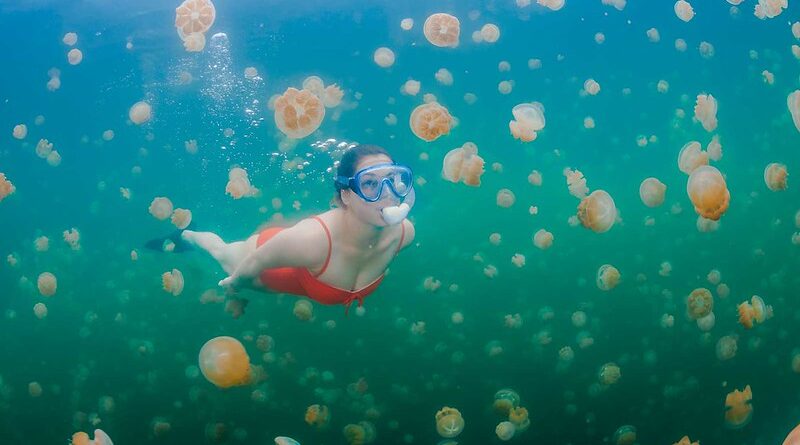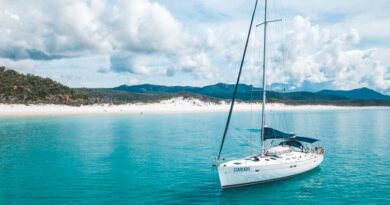How to Adjust Your Dive Gear to Make The Most of Palau
Make the most of one of the world’s most pristine environments by gearing up for the trip of a lifetime.
Palau. The mere mention of the place can send chills down a diver’s spine. This tiny republic in the heart of Micronesia is widely regarded as the best place in the world to dive. Thanks to pristine reefs, warm waters, and a web of some 500 islands with an almost endless array of aquatic life to see, Palau is the top spot on many divers’ bucket lists.
With flights from the U.S. mainland regularly over $1,400, getting to Palau isn’t cheap. But on the plus side, overnight dive excursions mean you can pack in a fistful of dives each day. And, once you’re there, you’ll want to make the most of your dive time.

Photo Credit: travelandleisure.com
To lend a hand, we’ve come up with five gear hacks to help you make the most of diving in Palau.
1. Use a reef hook
The current in some of Palau’s most popular dive spots, like Blue Corner, can be powerful. To cope with this, some dive shops in Palau loan out free reef hooks. These hooks give divers a low impact way to anchor to a non-living section of reef, sit back, and enjoy the show in safety.
As a bonus, you’ll increase your bottom time by using less air.
2. Throw a red filter on your GoPro
GoPro’s blue water diving filters—more commonly known as a red filter—will help you record more accurate colors underwater. GoPros and other action camera’s like Garmin’s VIRB have become ubiquitous with diving, and especially so in Palau, which offers a dizzying array of marine wildlife. Filters can be had for around $50 and simply snap onto your lens. It’s an easy and affordable upgrade for anyone who’s interested in recording their dives.
3. Bring the right wetsuit
Because water temperatures in Palau hover in the high 70’s and low 80’s Fahrenheit, you’ll only need a thin, neoprene wetsuit in order to dive comfortably there. If you’re used to diving in colder waters, don’t fret – there are guides that easily break down the difference between choosing wetsuits and choosing the best dive computers for diving. High quality, thin wet suits are widely available for a bargain.
If you don’t own a shorty wetsuit, a trip to Palau is an excellent excuse to try one out. If you are a frequent diver, however, looking for a good wetsuit is highly recommended. Choosing good brands will surely guarantee you that the wetsuit will last for long. However, despite how much we take care of the wetsuits, obtaining damages from a challenging dive is inevitable. In such case, it is more practical to repair it instead of buying a new one. Remember, the key to successful wetsuit repair is to address damage promptly and follow the manufacturer’s instructions on the repair materials you use. If you do not know how to repair it, you can get a wetsuit repair service and have them fix it for you. Regular maintenance and quick repairs can significantly prolong the life of your wetsuit.

4. Know your dive spots
Blue Corner is the most famous dive spot in Palau, but more than a dozen world class sites are located nearby. Blues Holes, German Channel, Chandelier Cave, Turtle Wall, and Peleliu Wall are all must-see destinations for you, your dive buddy, and your camera.
One of the nation’s most popular dive spots, Jellyfish Lake, is technically a snorkel-only affair, so plan on ditching the tanks for at least one of your bucket list dives.
5. Study up on the marine life
Diving in Palau can feel like moving through a three dimensional David Attenborough documentary. Living coral, manta ray, mandarin fish, deep blue chromis, Napoleon wrasse and three species of shark are just a few of the marine species you’re likely to see during your dives. To appreciate each in the moment, you’ll want to brush up on your marine biology beforehand.



